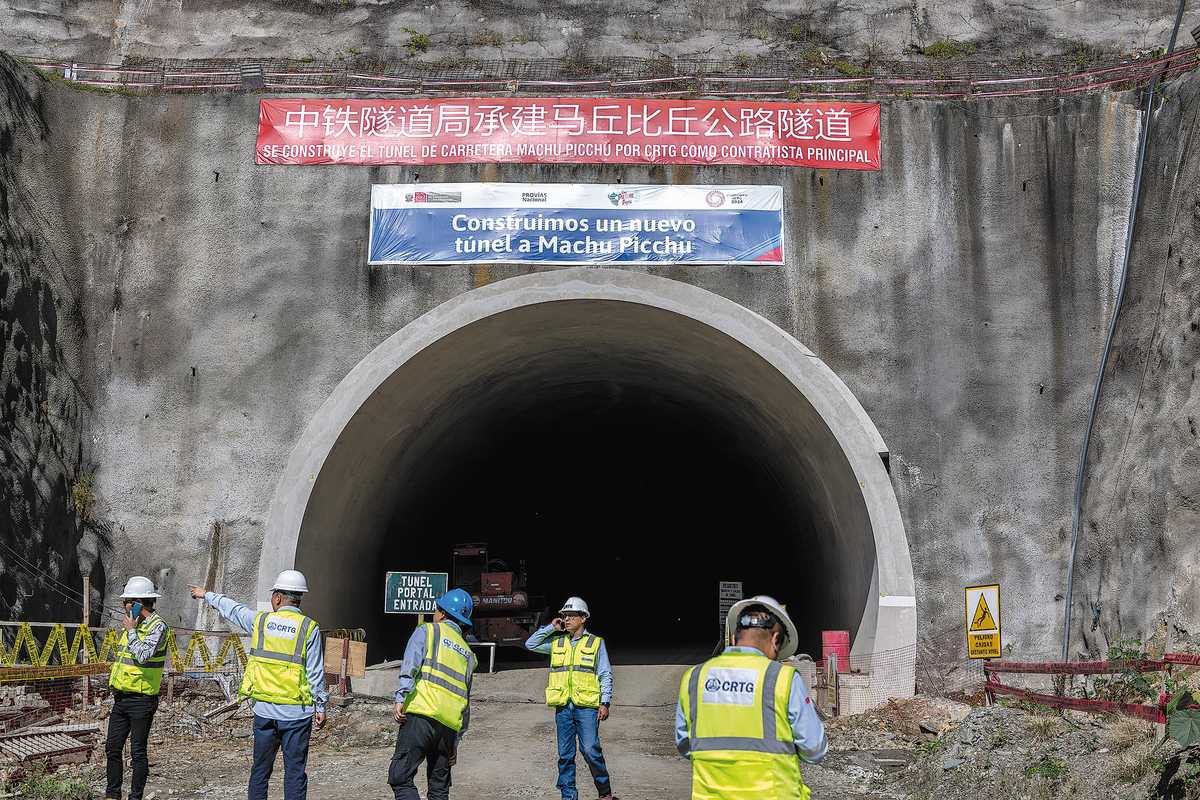Peru reaps dividends through BRI projects
Infrastructure helps local communities address practical development needs
By LIA ZHU in Lima, Peru | China Daily Global | Updated: 2024-11-21 10:29

In the highland Peruvian city of Huancayo, residents welcomed their new Liberty Hospital with a traditional Saya dance on Nov 14, while on the coast north of the capital Lima, lion dances marked the inauguration of Chancay Port.
The local celebrations of the two major Chinese-backed projects exemplify the tangible benefits of the Belt and Road Initiative in Peru, one of the first Latin American countries to participate in the initiative.
Construction of the Liberty Hospital in Huancayo in the Junin region by Chinese infrastructure company PowerChina started in May, 2022. It is the region's largest comprehensive medical facility.
It features a five-story main building complemented by four single-story auxiliary buildings, spanning more than 12,000 square meters.
Expected to help address healthcare issues, the hospital fulfills a 45-year wait for adequate medical facilities in the region, according to Junin Governor Zosimo Cardenas Muje, who attended the ceremony.
PowerChina's Project Manager Lyu Yongqiang said the hospital project also reflected successful cross-cultural collaboration.
"Chinese teams worked seamlessly with Peruvian experts, overcoming design challenges and complex equipment installation issues," he told China Daily.
The project's success was also a result of collaboration with the local community, he added.
"As the Chinese team actively participated in local activities, the community offered their support to the project team whenever required," said Lyu.
PowerChina has undertaken numerous development projects across Peru in recent years, ranging from water conservancy and hydropower to housing and transportation infrastructure.
"We have successfully completed and delivered multiple hospitals and schools throughout the country. Guided by our commitment to fostering 'Peru-China friendship for a shared beautiful future', we plan to expand our strategic cooperation into new areas, including clean energy, transportation networks and public infrastructure," said Lyu.
Seventy-eight kilometers north of Lima, the newly inaugurated Chancay Port represents another milestone in Peru-China cooperation.
Carlos Aquino, director of the Asia Studies Center and an economics professor at the National University of San Marcos, highlighted the broader implications of these developments.
"The day marked a milestone for Peru, drawing unprecedented attention from both domestic and international media," he told China Daily.
Public expectations also are soaring, reflected in rising land values and anticipated investments across multiple sectors — from transportation infrastructure to commercial development, he said.
Significant acceleration
Since joining the BRI in 2019, Peru has witnessed a significant acceleration in Chinese infrastructure investment. The country's position as one of Latin America's pioneering nations in establishing a comprehensive strategic partnership with China has facilitated this growth, strengthened by free trade arrangements.
The recent years have seen the completion of several landmark projects. The Lima Green Coast Project, undertaken by China Railway Tunnel Group and completed in January 2020, marks the first large-scale public engineering project completed and delivered by a Chinese company in Peru. The project includes expressways, bike lanes, pedestrian walkways, parks and beaches, contributing to one of Peru's coastal scenic routes.
The San Gaban III Hydroelectric Power Plant in the forest region of Puno will be the sixth-largest hydropower project in Peru after completion and has significant environmental benefits. It will also help to alleviate power supply constraints in southern Peru, promoting local industrial and regional economic development.
Another notable achievement is Peru's first tunnel highway to the ancient Inca city ruins of Machu Picchu, completed early this year. Stretching nearly 2 kilometers through the mountainous Cusco region, this project has enhanced tourism accessibility while facilitating the transportation of agricultural products.
Cynthia Sanborn, director of the Center for China and Asia-Pacific Studies at Universidad del Pacifico and a professor of political science at the university, told China Daily that China and Peru have a longstanding formal institutional relationship.
China and Peru established diplomatic ties in 1971. "The relationship with China is constant and mutually beneficial," Sanborn said.
Sanborn said the China-Peru relationship is focused on trade and investment, although there are other forms of collaboration.
China and Peru have witnessed a remarkable surge in bilateral trade and investment over the past decade. Building on centuries of contact, their modern economic partnership has flourished, particularly since the signing of a free trade agreement in 2009. This agreement has facilitated a dynamic exchange, with China now standing as Peru's top trading partner.
"This relationship with China has been maturing over time, and has been diversifying to a certain degree," said Leolino Dourado, a researcher at Universidad del Pacifico.
Ibeeth Dali Medina, a volunteer at the APEC meeting and a student at Pontificia Universidad Catolica del Peru, said she had been studying Chinese for 10 months at the Confucius Institute.
"We know that with globalization, Chinese will give me more opportunities to do what I want, maybe in the future, than other languages … and because of the fact that Peru has good relationships with China, they will give me more opportunities to do exchange programs."
liazhu@chinadailyusa.com
























